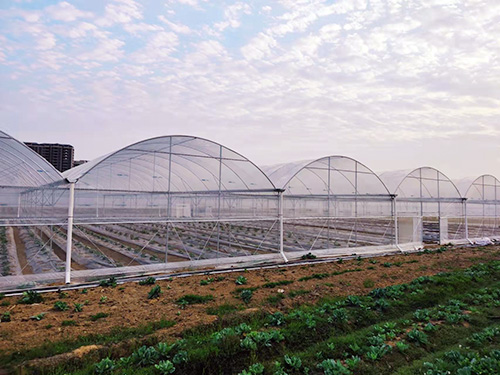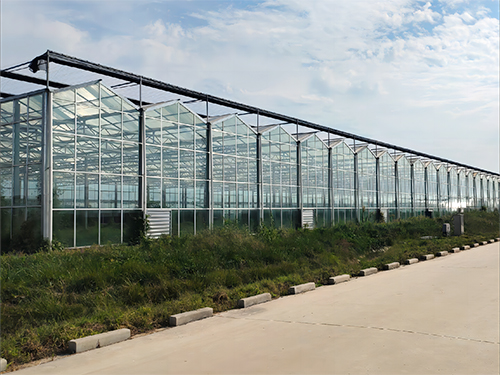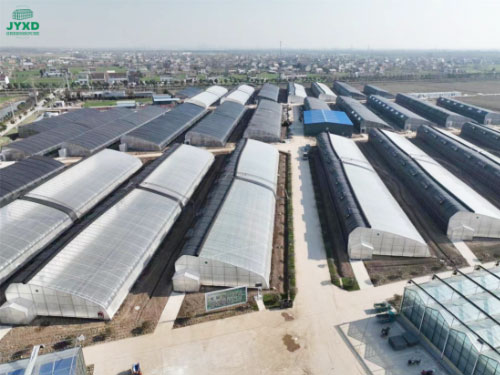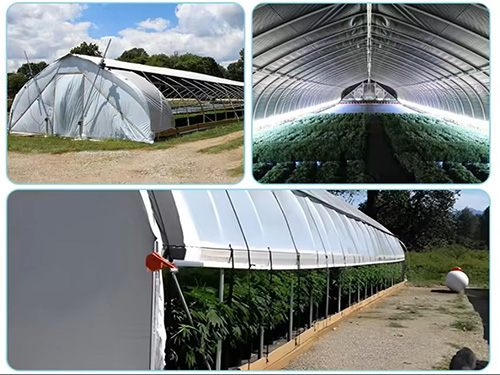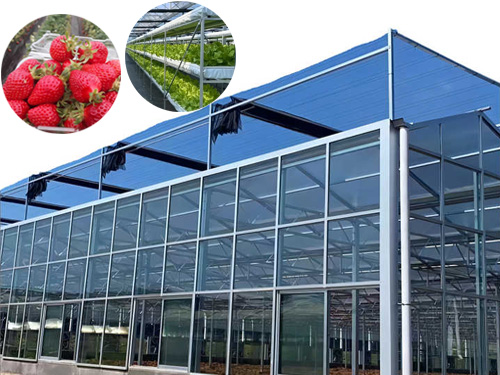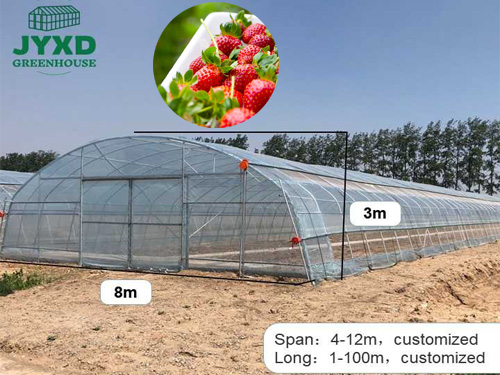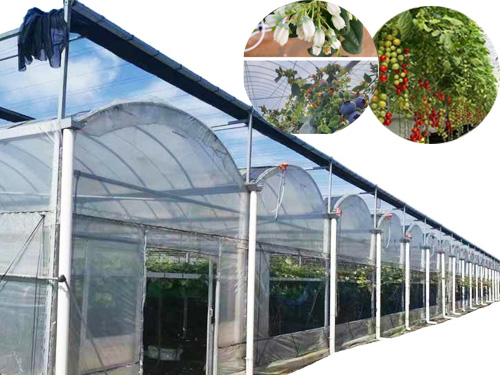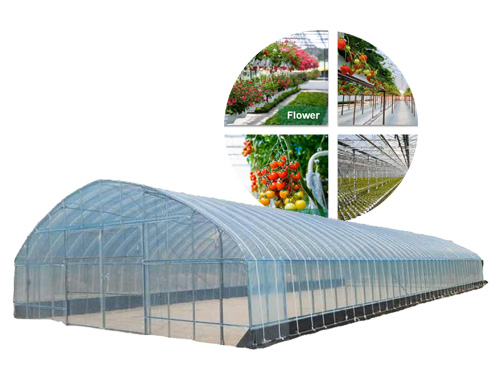NEWS DETAILS
NEWS INFORMATION
Herb Cultivation in Greenhouses: Market Demand and Planting Technology
AUTHOR:jyxd-greenhouse DATE:2024-12-30 08:26:47 HITS:68
In recent years, herb cultivation has gained increasing attention worldwide. Whether as ingredients for traditional Chinese medicine, seasonings, or natural health products, the market demand for herbs continues to grow. Growing herbs in a greenhouse not only boosts yield and quality but also ensures a stable year-round supply, bringing significant economic benefits to growers. This article will explore the market demand for herbs and greenhouse cultivation technology, providing practical advice for growers interested in this field.
Market Demand for Herbs
1. Demand for Natural Health Products
As people focus more on health, natural herbs become essential ingredients in dietary supplements, skincare products, and functional beverages. For example, chamomile, mint, and lavender are in high demand in the health and aromatherapy markets.
2. Traditional Medicinal Market
Many herbs (such as ginseng, reishi mushrooms, and astragalus) are core components of traditional Chinese medicine and natural remedies, with an expanding market scale each year.
3. Culinary and Seasoning Demand
Herb spices (like basil, rosemary, and thyme) are widely used in modern dining, especially in healthy eating and international cuisines, where demand continues to rise.
4. Export Market Potential
There is a strong international demand for herbs, particularly in countries that focus on natural ingredients, such as Europe and North America. High-quality, standardized herbs are highly competitive in export markets.
Advantages of Greenhouse Herb Cultivation
1. Controlled Environment
Greenhouses provide adjustable temperature, humidity, and light conditions, allowing herbs to grow in optimal environments, enhancing yield and quality.
2. Year-Round Supply
Greenhouse technology eliminates seasonal restrictions, enabling the year-round cultivation and supply of herbs.
3. Minimized Environmental Pressure
Greenhouses reduce the impact of pests and extreme weather, lowering production risks.
4. Multi-Species Coexistence
Greenhouses can be divided into zones based on herb demand, allowing multiple herb species to be cultivated simultaneously, increasing revenue sources.
Core Greenhouse Herb Cultivation Technology
1. Selecting Suitable Varieties
Choose herb varieties based on market demand and planting complexity.
· Medicinal Herbs: Ginseng, astragalus, reishi mushrooms, etc.
· Culinary Herbs: Rosemary, basil, mint, parsley, etc.
· Functional Herbs: Chamomile, lavender, elderberry, etc.
2. Environmental Control Technology
· Temperature Control: Most herbs grow best at temperatures between 15°C and 30°C; adjust temperature according to herb species.
· Light Management: Use LED grow lights or shade nets to ensure proper light exposure.
· Humidity Control: Humidity is typically maintained at 50%-70%; for high-humidity herbs like mint, increase humidity as needed.
· Ventilation System: Prevent mold growth and maintain a healthy environment for herb cultivation.
3. Efficient Irrigation and Fertilization
· Precision Irrigation: Use drip irrigation systems to provide appropriate water amounts based on herb species and growth stages, avoiding waterlogging.
· Organic Fertilization: Prioritize compost or organic fertilizers to ensure products meet natural health standards.
4. Pest and Disease Control
· Biological Control: Use natural enemies (such as ladybugs) to control pests, reducing the need for chemical pesticides.
· Physical Protection: Install insect nets and yellow sticky traps to minimize pest invasion.
· Crop Rotation Management: Rotate herbs within the same greenhouse to reduce soil-borne diseases.
5. Harvesting and Processing Technology
· Harvesting Timing: Harvest herbs at the optimal growth stage according to their intended use. For example, culinary herbs are usually harvested before flowering to retain their aroma.
· Drying and Storage: Use greenhouse facilities to conduct low-temperature drying, preventing the loss of active components in herbs.
Strategies to Increase Economic Efficiency
1. Branding and Certification
· Obtain Organic Certification or GAP (Good Agricultural Practices): Enhance product market recognition.
· Build a Brand Image: Highlight natural, green, and high-quality characteristics to attract high-end consumers.
2. Diversify Sales Channels
· Direct Sales: Sell herbs directly to consumers through farmers' markets or community-supported agriculture (CSA) programs.
· E-commerce Platforms: Set up online stores on major e-commerce platforms to expand market coverage.
· Collaborate with Enterprises: Partner with pharmaceutical companies, food processing factories, or restaurants to supply raw materials.
3. Value-Added Development
Process herbs into tea beverages, essential oils, or ointments, increasing product value. For example, mint can be made into mint tea, and lavender can be processed into aromatherapy essential oil.
4. Educational and Experiential Activities
Transform the greenhouse into an educational or tourism base, allowing visitors to experience activities like herb picking and DIY workshops, generating additional income.
Commercial Case Studies: Successful Greenhouse Herb Cultivation Models
1. High-Value Planting
A grower uses a greenhouse to cultivate basil and rosemary, primarily supplying high-end restaurants. Through standardized production and organic certification, their annual income increased by 30%.
2. Export Expansion
A company focuses on cultivating medicinal herbs like reishi mushrooms. By precisely controlling greenhouse conditions, they produce high-quality products for export to European and North American markets, successfully establishing international sales channels.
3. Agritourism Integration
A greenhouse herb farm combines tourism with agriculture, hosting “Herb Theme Day” events where visitors can experience herb picking and herbal cooking workshops, increasing annual revenue by 10%.
Conclusion
Herb cultivation offers great potential in modern agriculture. Using greenhouse technology, growers can significantly enhance herb yield and quality while meeting the growing demand for natural products. Through scientific cultivation management, market-oriented operations, and value-added development, growers can achieve maximum economic efficiency and maintain a competitive edge in the market. If you are interested in greenhouse herb cultivation, contact our team. We offer customized solutions and professional support to help you achieve your business goals!
Hebei Juyou Xinda Greenhouse Facilities Co.,Ltd.
Copyright © 2024-2025 https://www.jyxd-greenhouse.com. All Rights Reserved Hebei Juyou Xinda Greenhouse Facilities Co.,Ltd.Copyright





 Current Location:
Current Location: